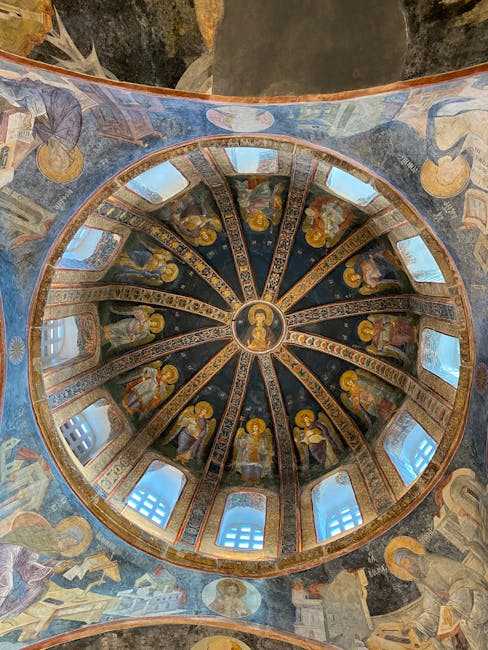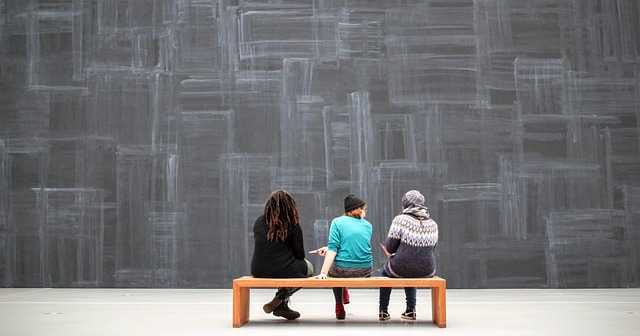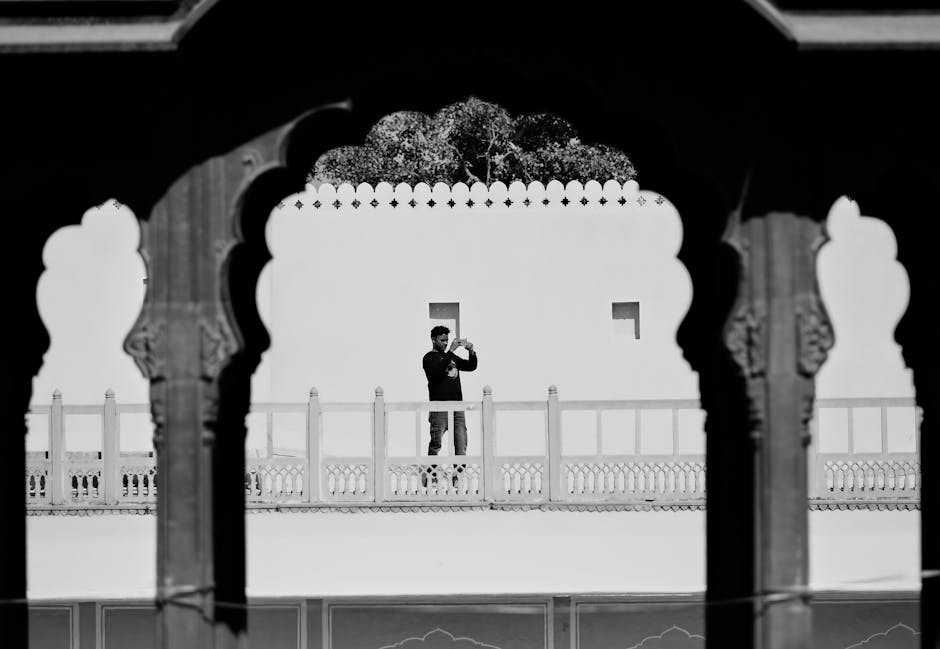Table of Contents
- Exploring the Aesthetic Connection Between Ancient Greece and Modern Art
- Key Figures: Artists Redefining Greek Influence in Contemporary Works
- Symbols and Motifs: How Ancient Greek Elements Resonate Today
- Art Exhibitions to Experience Modern Interpretations of Greek Culture
- Preserving Heritage: The Role of Ancient Art in Shaping Modern Creativity
- Q&A
- The Conclusion
Exploring the Aesthetic Connection Between Ancient Greece and Modern Art
Artistic movements often draw inspiration from the past, and few cultures have left as profound a legacy as Ancient Greece. The ideals of proportion, harmony, and beauty formulated during this era continue to ripple through the waves of contemporary art. Modern artists frequently revisit classical themes, incorporating elements like the idealized forms and mythological narratives that once captivated Greek society. This aesthetic dialogue bridges the gap between epochs, allowing contemporary creators to infuse their work with the timeless allure and philosophical depth of antiquity.
Contemporary artists employ various mediums and techniques to echo the Greek spirit. For instance, sculpture remains a central focus, where the use of marble and bronze recalls the material choices of ancient artisans. Additionally, installations often reflect Greek architectural elements, such as columns or altars, reimagined in a modern context. Some artists also explore concepts of mythology and history, crafting works that invite viewers to consider the relevance of these narratives in today’s world. This melding of styles not only honors the past but also prompts new interpretations and conversations about identity and culture.
A notable example of this aesthetic connection can be seen in recent exhibitions that feature immersive experiences inspired by ancient landscapes and stories. These exhibitions often include:
- Themed installations that reflect sacred sites.
- Interactive art that allows the audience to engage with mythological themes.
- Photography and digital media that reinterpret classical motifs.
Through these creative lenses, modern art continues to evoke the principles of ancient Greece, illustrating how history can serve as a fertile ground for innovation and inspiration.


Key Figures: Artists Redefining Greek Influence in Contemporary Works
In the vibrant tapestry of contemporary art, several artists stand out by weaving threads of ancient Greek influence into their modern creations. These visionaries not only pay homage to time-honored traditions but also challenge and reinterpret their meanings, enticing audiences to engage in dialogue about culture and identity. Noteworthy figures include:
- Yorgos Lanthimos – A filmmaker whose surreal narratives often echo the moral complexities found in ancient Greek tragedies.
- Marina Abramović – Known for her performance art, which draws from the physicality and emotional intensity of classical Greek theatre.
- Takis - An innovative sculptor who merges technology with ancient motifs, crafting kinetic sculptures that reflect Greek philosophies of movement and harmony.
Furthermore, numerous installations across galleries worldwide encapsulate the essence of Greek aesthetics through modern mediums. Artists like Elena Tejeda utilize contemporary materials such as digital projections and textiles, creating immersive experiences that evoke the grandeur of ancient temples. Her installation series reimagines the Parthenon, inviting viewers to explore the juxtaposition of past and present in spaces where modernity meets mythology.
To illustrate this renaissance of Greek influence in contemporary art, consider the variety of exhibitions held globally. The following table showcases some prominent galleries that have featured artists blending ancient Greek themes with modern artistry, highlighting the new relevance of classical ideals:
| Gallery Name | Location | Featured Artists |
|---|---|---|
| The British Museum | London, UK | Yorgos Lanthimos, Takis |
| Guggenheim Museum | New York, USA | Marina Abramović, Elena Tejeda |
| Venice Biennale | Venice, Italy | Various Contemporary Artists |
These creators and venues encapsulate a movement that not only honors the past but also invites critical engagement with how ancient themes still resonate in today’s world. By redefining their significance, they remind us that the legacies of ancient Greece continue to inspire and provoke thought in the realm of contemporary art.


Symbols and Motifs: How Ancient Greek Elements Resonate Today
Through the lens of contemporary creativity, the rich tapestry of ancient Greek symbols and motifs finds its way into modern expressions, influencing everything from visual art to architecture. The iconic meander pattern, known for its continuous loop symbolizing eternity, penetrates contemporary designs, infusing a sense of history into modern home décor and fashion. Artists today leverage these time-honored motifs, transforming them into geometric art that resonates with both beauty and meaning, acting as a bridge between the past and present.
Notably, the laurel wreath, once worn by victors in ancient athletic competitions, has evolved into a symbol of achievement and honor across various fields. In the realm of modern art, you can witness the laurel wreath reinterpreted in striking installations and digital designs, signifying not just victory but a broader recognition of excellence. This motif reminds us of our roots while simultaneously encouraging a dialogue about what it means to achieve in today’s world, thus providing a powerful link to our collective heritage.
Moreover, the mythical creatures of ancient Greece, such as the griffin and phoenix, exhibit remarkable resilience in modern narratives. These figures appear not only in traditional artworks but also in graphic novels and animated features, embodying themes of transformation and rebirth. Through bold visuals and narratives that challenge perceptions, contemporary artists breathe new life into these ancient symbols, using their stories to explore modern issues such as identity, change, and the interplay of tradition and innovation.


Art Exhibitions to Experience Modern Interpretations of Greek Culture
Visiting modern art exhibitions that reinterpret Greek culture offers a fascinating glimpse into the evolving perspectives of our past. Various artists are exploring ancient themes through contemporary lenses, creating a dialogue between history and modernity. These exhibitions often feature an array of mediums, allowing for a rich sensory experience that captivates both the eye and the mind. From installations that evoke classical architecture to multimedia presentations inspired by mythology, attendees are invited to reflect on the enduring legacy of Greece in today’s artistic landscape.
Exhibitions frequently spotlight works that challenge traditional boundaries and provoke thought. Artists like Vangelis Christou and Katerina Ioannides present pieces that fuse traditional Greek motifs with modern techniques, igniting conversations about identity, heritage, and the passage of time. Visitors can expect to encounter a blend of sculptures, paintings, and digital art that resonate with ancient stories while also addressing contemporary issues, such as displacement and resilience.
| Artist | Exhibition Title | Location |
|---|---|---|
| Vangelis Christou | Echoes of Antiquity | Athens Art Center |
| Katerina Ioannides | Modern Mythos | Thessaloniki Museum of Contemporary Art |
| Pavlos Nikos | Fragments Reimagined | Heraklion Cultural Institute |
Engaging with these exhibitions not only provides an opportunity to appreciate art but also invites deeper reflections on cultural evolution. Interactive installations and performance art pieces encourage participation, allowing visitors to become part of the dialogue surrounding Greek heritage. Such experiences underscore the relevance of ancient narratives in modern contexts, highlighting how the past informs the present and continues to inspire future generations of artists.


Preserving Heritage: The Role of Ancient Art in Shaping Modern Creativity
The influence of ancient art on modern creativity is profound and multifaceted. Artists today draw inspiration from the intricate designs and symbolic meanings embedded in the works of the past, particularly those from ancient Greece. The refined aesthetics of Greek sculpture, pottery, and architecture serve as a wellspring of inspiration, encouraging contemporary artists to explore themes of beauty, form, and culture. This connection transcends mere imitation; it facilitates a dialogue across centuries, enabling artists to reinterpret and recontextualize ancient narratives in ways that resonate with today’s audiences.
Moreover, the philosophical underpinnings of ancient Greek art emphasize ideals such as harmony, balance, and proportion. These concepts not only shape the visual composition of modern works but also inspire innovative approaches to artistic expression. For instance, modern installations and multimedia art often reflect the same principles of symmetry and aesthetics seen in Greek artworks. Artists might utilize modern materials or digital technology yet echo ancient techniques, thus bridging the gap between old and new in ways that challenge viewers’ perceptions and invite introspection.
To illustrate this enduring legacy, consider the following table showcasing a selection of modern artists and their ancient Greek inspirations:
| Modern Artist | Inspired Element | Artistic Work |
|---|---|---|
| Jeff Koons | Vases and Ceramics | Balloon Animals |
| Kara Walker | Silhouettes and Narrative | A Subtlety |
| Yayoi Kusama | Patterns and Spaces | Infinity Mirror Rooms |
These modern interpretations not only celebrate the technological advancements in contemporary art but also highlight the timelessness of Greek heritage. The interplay between past and present sparks a revival of classical themes, enriching modern artistry and ensuring that the wisdom of ancient civilizations continues to inspire future generations.
